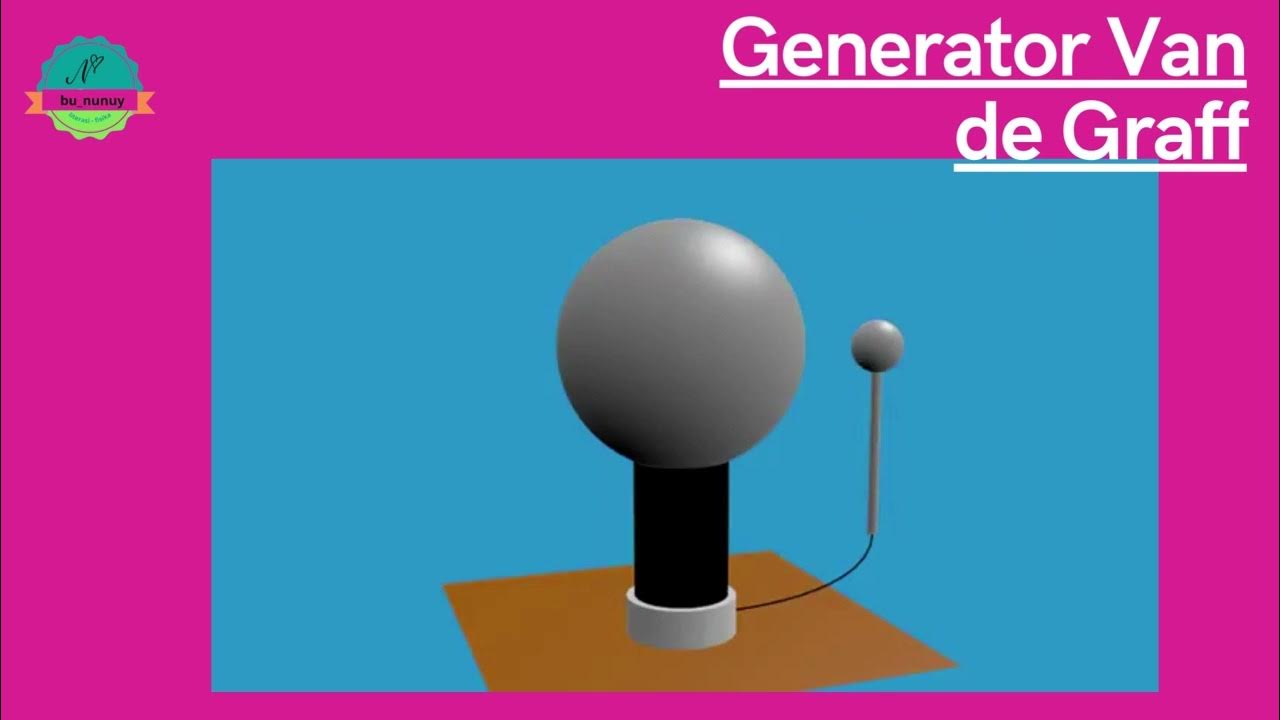Exploring Static Electricity
Summary
TLDRIn 'Fun Science Demos,' Jared explores the fascinating world of static electricity through interactive experiments. He demonstrates how rubbing a straw on fur can charge it with negative charges, attracting a can due to the attraction between opposite charges. Jared also shows that water, when charged, can be influenced by a negatively charged balloon, indicating it carries positive charges. He further experiments with a plastic fork and comb, attracting confetti with static electricity. The video culminates with a creative game, 'Sharks and Minnows,' where charged straws 'fish' for confetti without being 'eaten' by hanging tissue paper sharks, showcasing the fun and educational aspects of science.
Takeaways
- 🔬 All matter is composed of positive and negative charges, and sometimes these charges can be transferred through friction.
- ⚡ Static electricity occurs when there is an imbalance of positive and negative charges, causing them to attract or repel each other.
- 🌟 Rubbing a straw on fur can charge the straw with negative charges, which can then attract positively charged objects.
- 🎈 When a balloon is rubbed on fur, it gains extra negative charges, which can be used to demonstrate attraction to neutral objects like a can.
- 💧 Water, being a liquid, also contains positive and negative charges, and can be influenced by charged objects like a negatively charged balloon.
- 🎉 Static electricity can cause small lightweight objects like confetti to be attracted to charged objects, demonstrating the principle of opposite charges attracting.
- 🍽 Everyday objects like combs, forks, and bats can be charged by rubbing them on wool, and then used to attract lightweight materials.
- 🎮 Static electricity can be used to create fun games, such as 'Sharks and Minnows,' where charged objects are used to interact with game pieces.
- 🤔 The concept of static electricity can inspire creative thinking and experimentation, encouraging the invention of new games and applications.
- 📚 To delve deeper into the science behind static electricity, additional resources are provided in the video description for further learning.
Q & A
What is the main principle demonstrated in the Fun Science Demos video?
-The main principle demonstrated in the video is static electricity, which is the attraction and repulsion between objects that have different or same charges.
How does rubbing a straw on fur create a charge?
-Rubbing a straw on fur creates a charge by transferring electrons from the fur to the straw, resulting in the straw having an excess of negative charges.
What happens when a charged balloon is brought near a neutral can?
-When a charged balloon is brought near a neutral can, the positive charges in the can are attracted to the negative charges on the balloon, causing the can to be attracted to the balloon.
Why does the water stream get attracted to the charged balloon?
-The water stream gets attracted to the charged balloon because the negative charges on the balloon attract the positive charges in the water, demonstrating that water has positive charges when in liquid form.
What role does the concept of charge polarity play in the static electricity demonstrations?
-Charge polarity plays a crucial role in static electricity demonstrations as it explains the attraction between opposite charges (positive and negative) and the repulsion between like charges.
How does the comb pick up confetti after being rubbed on wool?
-The comb picks up confetti after being rubbed on wool because the friction charges the comb with extra negative charges, which then attract the positive charges in the paper confetti.
What materials can be used to create static electricity in the Fun Science Demos video?
-Materials used to create static electricity in the video include straws, fur, balloons, cans, water, wool fabric, combs, plastic forks, and plastic bats.
What is the game 'Sharks and Minnows' and how does it utilize static electricity?
-The game 'Sharks and Minnows' is a fun game that uses static electricity to attract 'fish food' (confetti) towards a 'minnow' (straw) without being 'eaten' by 'sharks' (tissue paper). The minnow straw is charged to attract the confetti.
Can other objects besides balloons be charged with static electricity?
-Yes, other objects like combs, plastic forks, and plastic bats can also be charged with static electricity, as demonstrated by their ability to attract confetti after being rubbed on wool fabric.
What is the educational purpose of the Fun Science Demos video?
-The educational purpose of the video is to teach viewers about the principles of static electricity through engaging and interactive demonstrations, making science fun and accessible.
Outlines

Этот раздел доступен только подписчикам платных тарифов. Пожалуйста, перейдите на платный тариф для доступа.
Перейти на платный тарифMindmap

Этот раздел доступен только подписчикам платных тарифов. Пожалуйста, перейдите на платный тариф для доступа.
Перейти на платный тарифKeywords

Этот раздел доступен только подписчикам платных тарифов. Пожалуйста, перейдите на платный тариф для доступа.
Перейти на платный тарифHighlights

Этот раздел доступен только подписчикам платных тарифов. Пожалуйста, перейдите на платный тариф для доступа.
Перейти на платный тарифTranscripts

Этот раздел доступен только подписчикам платных тарифов. Пожалуйста, перейдите на платный тариф для доступа.
Перейти на платный тариф5.0 / 5 (0 votes)






